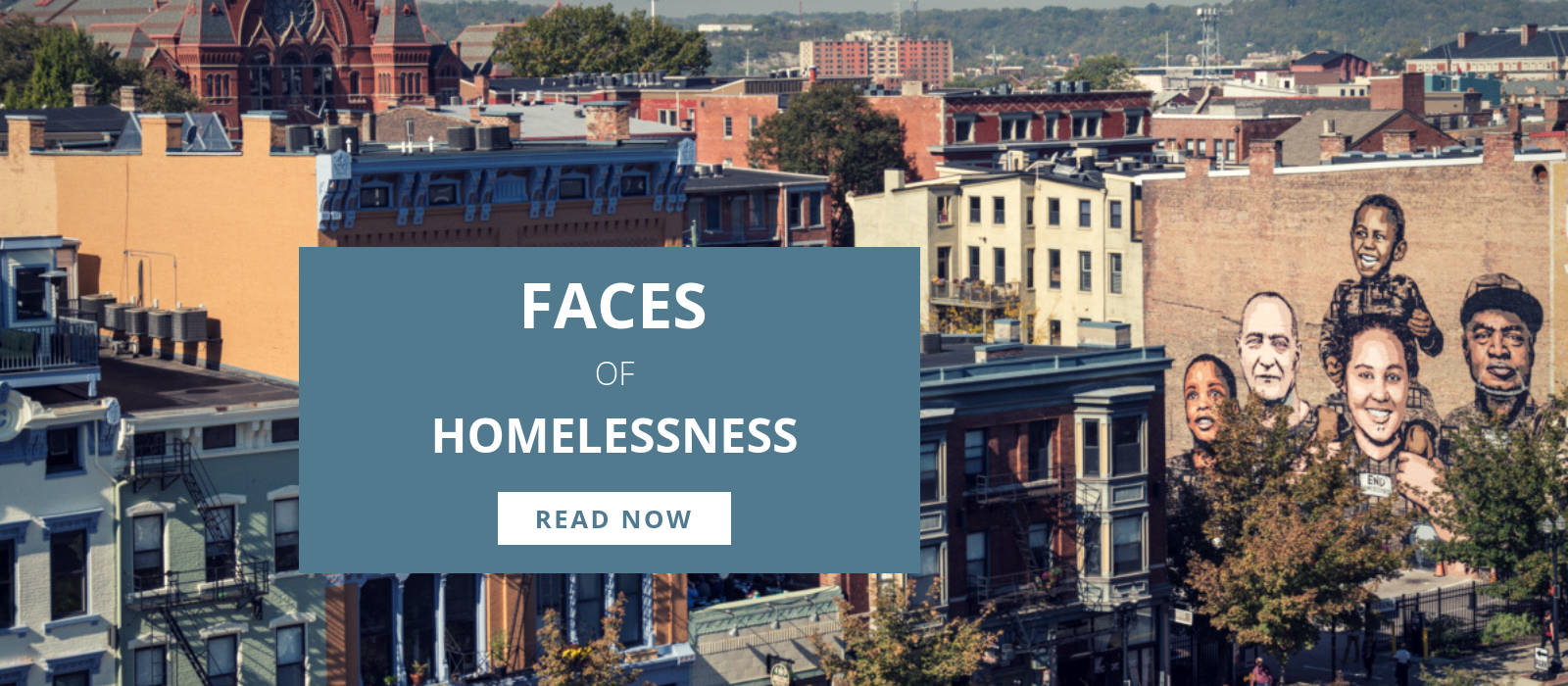 In 2017, 7,197 people found themselves sleeping in an emergency shelter or in a place not meant for human habitation. This number of people experiencing literal homelessness has been stubborn over the past five years.
In 2017, 7,197 people found themselves sleeping in an emergency shelter or in a place not meant for human habitation. This number of people experiencing literal homelessness has been stubborn over the past five years.
Declining by only 1.5% (7,306 in 2013). A change of a small percentage might lead us to think that little has changed within the homeless services system.
But the reality is very different.
An excerpt from our Faces of Homelessness Impact Report. Read the full report here
Fewer people on the street, more people in Shelter
- The number of people sleeping in places not meant for human habitation (aka “on the streets”) has declined by 42% over the past five years. (From 1,692 people in 2013, to 979 in 2017). While the number of people entering homeless shelters in Hamilton County has remained steady over that same time period (6,661 in 2013, 6,670 in 2017).
- As a result, by percentage, more homeless people are entering shelters. (23% of homeless people slept on the streets in 2013, 14% in 2017). This is clearly a positive development. A recent study published by JAMA Internal Medicine found that homeless people sleeping in places not meant for human habitation are three times as likely to die as those sleeping in shelters.
More people in Housing Programs
- More Rapid Re-Housing (RRH). RRH is a short-term best-practice in assisting people out of homelessness quickly. Moving people back into their own housing while providing them with case management services to help them achieve self-sufficiency. While there were no RRH programs in Hamilton County prior to 2009, 3,366 people were assisted by Rapid Re-housing programs in 2017.
- More Permanent Supportive Housing (PSH). PSH is a more long-term housing option. Targeted toward people who are both chronically homeless and disabled. A goal of PSH is to provide people with housing and services who otherwise might be homeless long term, and cycle through other community resources. Such as hospitals and other facilities which are far more expensive than housing. Local PSH capacity has continued to expand. The number of people served in PSH programs increasing by 8% over the past five years (2,371 people in 2013, 2,577 in 2017).
Overall Permanent Housing Capacity – both RRH and PSH are Permanent Housing programs. With the increase in each considered together, the number of homeless people served in local Permanent Housing programs has increased by 42% over the past five years. (3,381 people in 2013, 5,835 in 2017).
Unfortunately, our data points to several issues of concern
- Youth Homelessness: homelessness continues to be an issue disproportionately affecting young people. In 2017, 24% of homeless people were under the age of 18. 35% were under the age of 25, and 54% were under the age of 35. One common myth of homelessness is that it is an issue that disproportionately effects people between the ages of 40-65. But the data does not support this common assumption. More and more, homelessness is an issue affecting the young.
- Family Homelessness: our data indicates that the number of families on the streets or in shelters has declined in recent years. Including a 4% decline from 2016 (586 families) to 2017 (560 families). However, this data doesn’t tell the full story. In Hamilton County, families call the Central Access Point (CAP) helpline to gain entry into a number of facilities. However, data specifically from CAP indicates that 60% of the families that called CAP seeking entry into a shelter or Shelter Diversion program were not provided with either. Generally due to a lack of capacity in the shelters and Shelter Diversion programs.
If capacity had been available, including if the families residing in shelter had been able to exit more quickly freeing up beds, these families could have been served.
